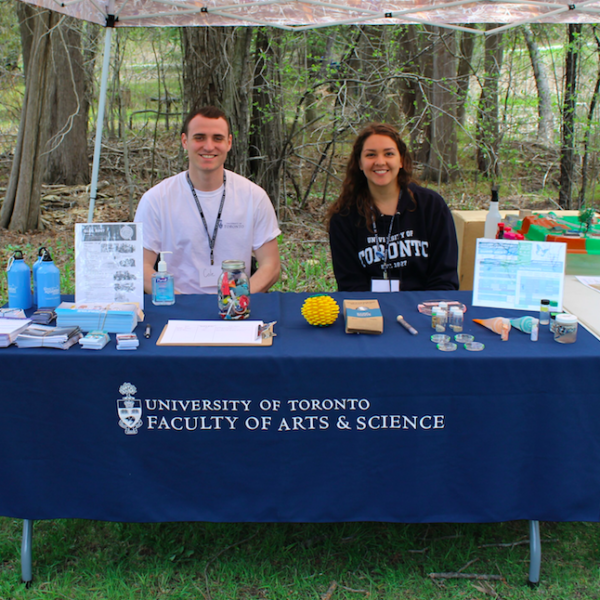Cleanup the Don
Published by Ocean Conservancy
This blog post was written by Lisa Erdle and Kennedy Bucci, Ph.D. students in the Rochman Lab at the University of Toronto.
On May 6th, 2018, we led our first annual Cleanup the Don inland coastal cleanup to remove trash along the Don River, keep trash out of Lake Ontario and raise awareness about the issue of plastic pollution. Students and researchers from the University of Toronto joined forces with the Great Canadian Shoreline Cleanup, the International Coastal Cleanup and Paddle the Don, an annual event organized by the Toronto and Region Conservation Authority (TRCA) where local residents can canoe and kayak down the Don River.
The Don River is Toronto’s most urbanized watershed and is widely enjoyed by citizens and tourists alike. On any given day, one can see a wide variety of activities in the expanse of parkland in the ravines around the Don River. Cyclists, walkers, runners, anglers and others use the trails alongside the river, which is located a short walk from Toronto’s downtown core. But, it is also a river with plastic pollution throughout.


At six locations, spanning over 10km of the Don River, teams collected 210 kg of trash, nearly half of which was recycled. Volunteers found many common items such as plastic packaging, coffee cups, plastic bottles and plastic bags. However, we were surprised to find a few unusual items like a vacuum cleaner, a toboggan and Venetian blinds! By number, cigarette butts were the most common item collected during the cleanup, and nearly 2000 were sent to be recycled. Despite their small size, they can be particularly harmful in the environment due to the toxic chemicals they contain.
While some pollution may originate from park-goers, wind and rain also carry plastic debris from land into rivers, lakes and oceans. And piece by piece, the pollution adds up.
Scientists estimate that between 4.8 to 12.7 million metric tons of plastic enter the ocean from land every year due to mismanaged waste. Plastic can also enter the environment as microplastic—small plastic less than 5mm in size. Canada is taking steps through the microbead ban, which will eliminate microbeads in personal care products (like toothpaste and facewash) as of July 1, 2018. However, policy does not yet address other sources of microplastics, such as microfibers that shed from textiles or synthetic rubber dust from tires.
This year Canada holds the presidency of the G7. As part of its efforts to protect our oceans, Canada has indicated its intentions to support international policy for a zero-plastics-waste charter. At the national level, Canadians have recognized work is also needed to address single-use plastic, increase recycled content in plastic products, and to increase the national recycling rate.
There are many ways we are working to tackle the plastic pollution problem, and we encourage others to do the same:
- Avoid single-use plastic items: Using environmentally-friendly items such as stainless steel or glass straws and reusable water bottles, shopping bags and utensils, can help divert waste from landfills and the environment.
- Improve recycling at home: By learning better recycling habits, we can prevent recyclable products from ending up in a landfill. While the list of “recyclables” varies depending on where you live, there are often resources available to help. Where we live, the City of Toronto’s Waste Wizard identifies the proper bin to put your waste.
- Get involved in your community: Joining a cleanup in your area, (or leading one!) can help reduce plastic in the environment. The Great Canadian Shoreline Cleanup and International Coastal Cleanup have resources to help organize cleanups, as well as track and report data.
As we continue to lead cleanups, we are hoping to gain valuable information to answer questions such as: Do patterns of waste change over time? Will accumulation of litter in the Don River decrease as “waste literacy” in this watershed improves? We also hope that the data we collect can help provide a better estimation of plastic sources and increase scientific knowledge to inform effective policies to prevent further plastic pollution.
There is still a long way ahead to achieve zero-plastic-waste in our city and others, but our first cleanup showed us that the people care about the plastics problem and are willing to help. Over the next year, we have exciting plans to reduce waste entering Lake Ontario and increase waste literacy in our city. We look forward to seeing you out there!
Keep an eye out for future cleanups and activities from the University of Toronto Trash Team by following the Rochman Lab on Twitter. And follow Lisa and Kennedy on twitter to see more about their research.
Sign up for our emails!
The post Cleanup the Don appeared first on Ocean Conservancy.
Read the full article at: https://oceanconservancy.org/blog/2018/06/14/cleanup-the-don/



